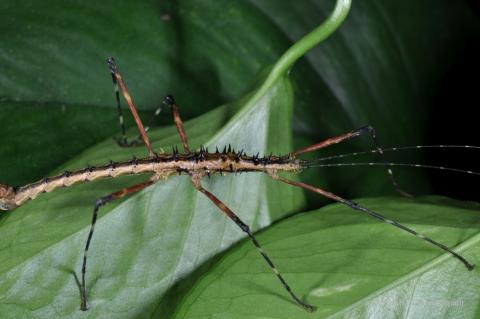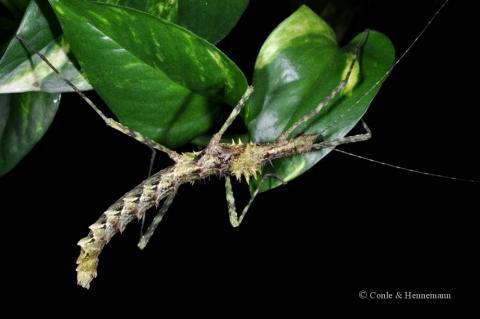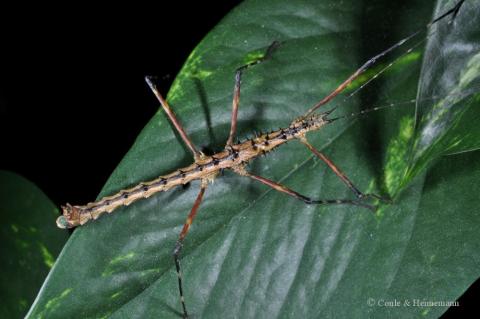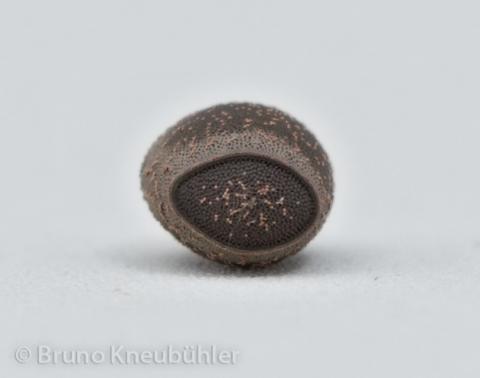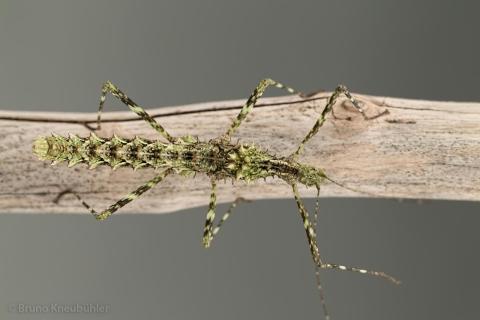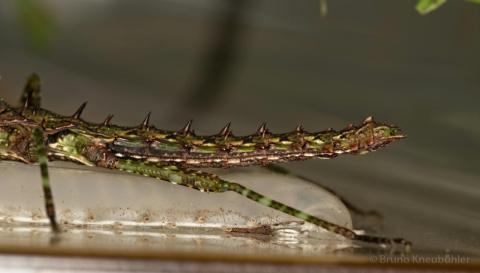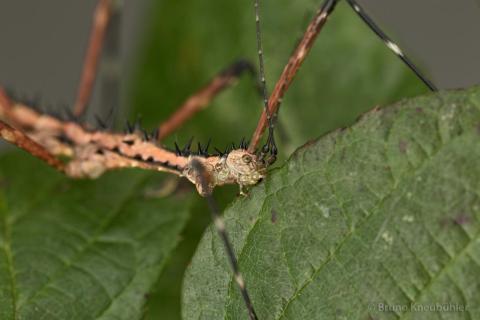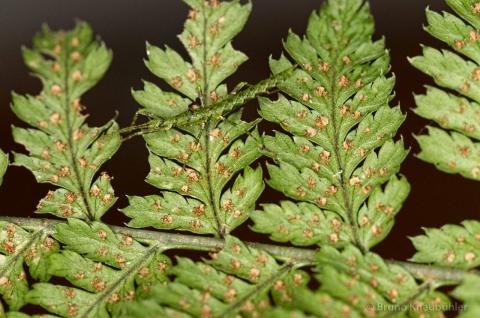
Genus
Species
Stock
CLP
532
PSG
328
Culture status
In culture
Foodplants
Ferns
Bramble (Rubus spp.)
Ivy (Hedera helix)
Breeding notes
(by Bruno Kneubuehler)
General Notes
- Etymology
- andr- or andro- from the greek andros = pertaining to, like a man or men
- promachus from the greek Πρόμαχος = Vorkämpfer
- scut- or scuti- from the latin scutum = Schild
- at the moment (2013) the genus Andropromachus contains 4 valid species
- Spiniphasma Chen & He, 2000 is a synonym for Andropromachus
- the type species for Andropromachus is Andropromachus scutatus Carl, 1913
- Andropromachus scutatus „Tam Dao“ has been identified by Joachim Bresseel (Belgium)
_________________
Culture History
- 2012 - first successful culture by Joachim Bresseel (Belgium)
- 2012 – distributed to other breeders as Andropromachus scutatus „Tam Dao“ by Bruno Kneubuehler
_________________
Origin
- Tam Dao NP in Vietnam
_________________
Females
- very spiny and ornamentally colored phasmids
- about 6 – 7 cm long
- coloration is rather variable amongst females
- the basic color can be brown, grey-brown, red-brown green
- a strong dark patterning dorsally over the whole body and legs
- many spines dorsally over the whole body
- spines on the metathorax are especially big
- antennae light-dark annulated and about as long as the forelegs
- lower body side paler and less contrasty
- praeopercular organ (the structure at the ventral end of the 7th abdominal segment, which serves as an anchorage for the male during mating) is very well developed
- subgenital plate shorter than the abdominal ending
_________________
Males
- very beautiful creatures – spiny and nicely colored
- etwa 4.5 – 5 cm lang
- coloration is rather consistent amongst males
- body color is beige or reddish-brown
- a dark, almost black strip along the middle of the whole upper body
- numerous big black spines on the upper body
- legs with reddish-brown (femur) and black-white annulated areas (tibia, tarsus)
_________________
Nymphs
- very small nymphs
- about 8 mm long
- green marbled
- antennae about as long as forelegs
- by L3 it is quite easy to draw a distinction between ♀♂ (by the naked eye)
_________________
Eggs
- very small – amongst the smallest eggs I have ever seen
- about 1.5 x 1 mm
- dark brown
- many small, light, warty tubercles
- oval
- matt
- coarse surface
- micropylar plate roundish
- micropylar pore is well visible (dark dot)
_________________
Food Plants
- ferns (from the forest) – is very well accepted by freshly hatched nymphs (not tested with older nymphs and adults). Freshly hatched nymphs feed only very little, so even in winter one can find enough fern out in the forests for them
- bramble (Rubus spp.) - is well accepted by older nymphs (by L2) and adults. Most freshly hatched nymphs feed on bramble only reluctantly and many die. Maybe this will change over time ...
- ivy (Hedera helix)
well accepted by nymphs (info Gianluca Guaitoli, Italy)
_________________
Behaviour
- nymphs as well as adult are mainly passive during the day and are out and about feeding at night
- but some males might also be active during the day
- nymphs and adults react rather frantically when they feel threatened (like when they are touched). They drop down, wriggle about and usually freeze again after a few steps
- matings are frequent and males can stay with the same female for some time
- females just drop the eggs to the ground
_________________
Developement
- incubation time (HH-incubation on slightly damp sand at 20 - 23 °C) is about 3 - 5 months (the exact date when the eggs were laid was unknown)
- spread some dried (!) moss over the eggs - this will make it much easier for the nymphs to hatch unscathed and it also reduces mould growth to some extend
- hatching ratio in F1 was very high (> 50%)
- males will be adult after about 3 months (at 20 – 23°C), females after about 4 – 4.5 months
- females start laying eggs after about 3 – 4 weeks
- adults can live for several months
_________________
Breeding Notes
- my general notes on how to breed phasmids are an integral part of this care sheet ...
- it is easy to breed this species
- it is recommend to keep the nymphs seperate from the adults, which makes it much easier to monitor their developement and they are protected from being disturbed or even harmed by the much bigger adults (like during their moults)
- the freshly hatched nymphs are very small and can escape even through small cracks in the cage !
- due to their size and coloration, freshly hatched nymphs are at times very hard to spot on their food plants – especially as long as they are fed on fern. So be careful when changing their food plants
- keep the nymphs in a cage with good ventilation, but take care that the humidity does not drop too low
- a constantly wet paper towel on the floor of the cage helps raising humidity
- a humidity level of about 70+ % rH (for adults) and 80+ % rH (for nymphs) seems to be fine
- nymphs can be kept in a Faunabox (or similar cages like Faunarium)
- move nymphs to a bigger cage as they grow bigger
- a cage of at least 30 x 30 x 30 cm should be provided for 5 - 6 adult couples of this species
- generally I advise to keep different phasmid species seperately (unfortunately, overcrowed cages are still too common ...)
- I have never sprayed nymphs, adults or their cage with water
- make sure that nymphs, which are about to undergo their adult moult, do not find places in the cage which would not offer them enough space beneath to moult successfully
_________________
References
- Phasmida Species Files (www.phasmida.orthoptera.org)


